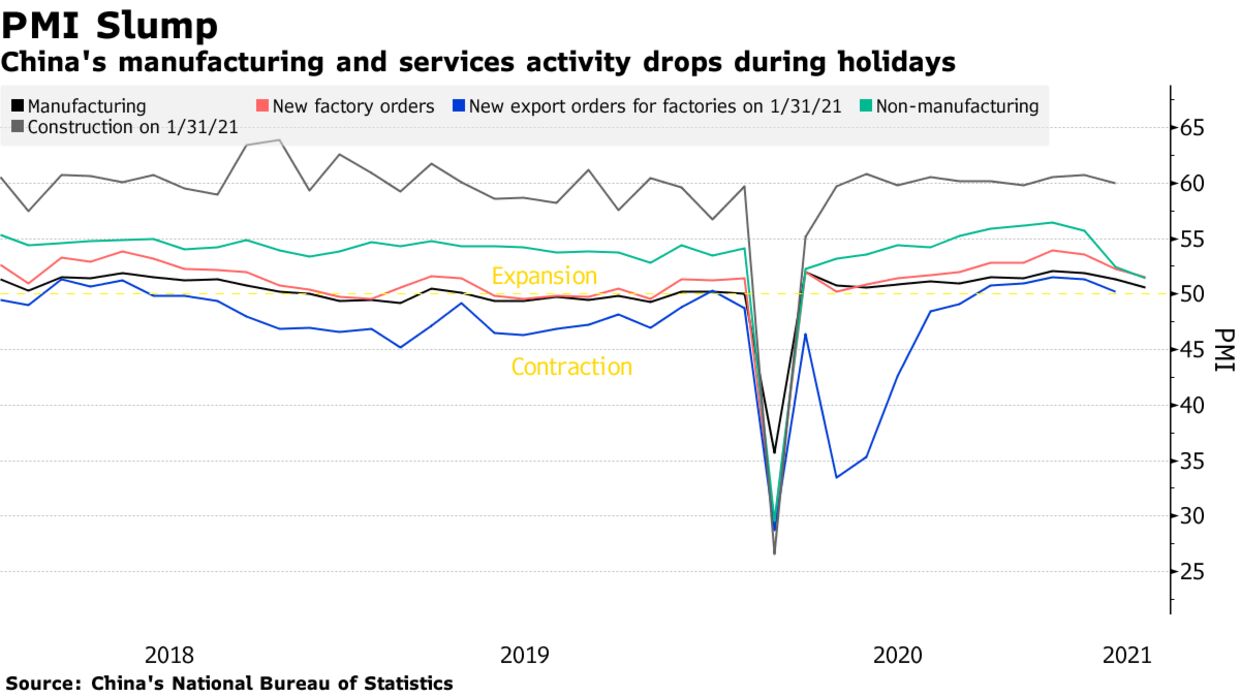China’s economic recovery slowed in February as factories shut during the Lunar New Year holidays and virus restrictions dampened what’s usually a busy travel season.
- The official manufacturing purchasing managers’ index fell to a nine-month low of 50.6 from 51.3 in January as export orders plunged, the National Bureau of Statistics said Sunday. That was lower than the median estimate of 51 in a Bloomberg survey of economists
- The non-manufacturing gauge, which reflects activity in the construction and services sectors, declined to 51.4, versus a median estimate of 52. The composite index dropped to 51.6 in February, the lowest since the virus lockdown a year ago

Manufacturing activity is usually distorted by the week-long Lunar New Year holidays — which fell in February this year — when factories and businesses close and many people travel back to their hometowns for family gatherings.
The larger-than-expected declines in China’s February purchasing managers’ indexes should not cause alarm. They reflect seasonal weakness and effects of the virus surge before the Lunar New Year. What they don’t fully capture, though, is the stabilization that started to take hold late in the month.
— Chang Shu, chief Asia economist
For the full report, click here
The statistics bureau said holiday closures were the main reason for the slump in manufacturing, while retailing, catering and entertainment remained relatively active.
Despite the seasonal slump in activity, the PMIs remain above the 50-mark, indicating output is still expanding, but at a slower pace. A set of early economic indicators tracked by Bloomberg also showed the recovery continued into February.
Other Details
- A sub-index of new export orders for factories slumped to 48.8 in February from 50.2 in the previous month, while the new orders index fell to 51.5
- The sub-index for construction activity took a knock during the holidays, dropping to 54.7 from 60 in January. The services business activity dropped to 50.8 from 51.1
- Rising commodity prices have pushed up input costs in recent months, with the index measuring input prices remaining above 60 for a fourth month in February
- The employment indexes for manufacturing and non-manufacturing sectors remained below 50, indicating jobs are still being lost
